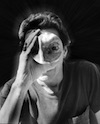 [This was the last of my “Latent Image” columns in the Village Voice, where it appeared on March 15, 1973 — 45 years ago today — under the headline (not written by me) “Sticky-Sweet Hour Of Prayer.” It’s the first half of a two-part critique of the exhibition and catalog Octave of Prayer, which was edited and written by Minor White.
[This was the last of my “Latent Image” columns in the Village Voice, where it appeared on March 15, 1973 — 45 years ago today — under the headline (not written by me) “Sticky-Sweet Hour Of Prayer.” It’s the first half of a two-part critique of the exhibition and catalog Octave of Prayer, which was edited and written by Minor White.
At the time that I drafted it, I knew that this piece would be controversial within the photography community. What I did not foresee was that, after the first part appeared in print, the second part of the piece would so distress a substitute editor at the Voice that he would refuse to run it without major alterations and changes in tone. This led to my backing up the piece as written with a conditional resignation, which the Voice management eventually accepted.
Both parts of the piece were finally run, intact, in the November 1973 issue of Camera 35, for which completion I’d like to thank Jim Hughes, who was then that magazine’s editor. (Subscriber and periodic sponsor A. David Wunsch, who had a copy thereof handy, supplied scans that you can download here as a pdf file.)
![]() Camera 35 billed it as a “Great Debate!!!” and ran a rebuttal from Minor in the same issue. Along with my resignation from the Voice and the accompanying uproar, all that made it hard to put the piece in its proper perspective. Indeed, I’m still not sure what that is; but here, at least, is the piece as it was written, word for word. For Part 2 — what the Voice refused to publish — click here. — A.D.C.]
Camera 35 billed it as a “Great Debate!!!” and ran a rebuttal from Minor in the same issue. Along with my resignation from the Voice and the accompanying uproar, all that made it hard to put the piece in its proper perspective. Indeed, I’m still not sure what that is; but here, at least, is the piece as it was written, word for word. For Part 2 — what the Voice refused to publish — click here. — A.D.C.]
•
Minor White: Octave of Prayer (I)
I had a good week all in all, enjoying Larry Fink’s family album at the Diana Gallery (brash, upfront portraits which were quintessentially New York Jewish) and being bored stiff by the “Landscape and Discovery” exhibit at Hofstra. While the latter show’s premise — that photographers in the twentieth century have gradually turned from external to internal documentation of all subjects, including the landscape — is correct, it has been self-evident at least since the days of Weston and can even be traced back to Stieglitz, a pivotal figure in this regard whose omission from the show is glaring.
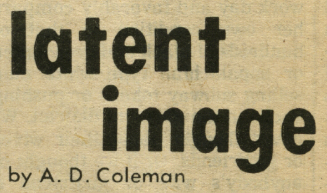 There is at least one inconsistency in the show’s makeup, though, which disturbed me. All the 19th-century figures — Frith, Jackson, O’Sullivan, Muybridge, et al — were essentially commercial photographers, in that they made their living by selling their prints, whereas most of the twentieth-century photographers — partially excepting Ansel Adams — are or profess to be disinterested in the process of marketing imagery. The 19th-century work was inevitably affected by this mercantilism (though not necessarily to its detriment), while the later work achieves its privacy by withdrawing from the marketplace (not necessarily to its advantage).
There is at least one inconsistency in the show’s makeup, though, which disturbed me. All the 19th-century figures — Frith, Jackson, O’Sullivan, Muybridge, et al — were essentially commercial photographers, in that they made their living by selling their prints, whereas most of the twentieth-century photographers — partially excepting Ansel Adams — are or profess to be disinterested in the process of marketing imagery. The 19th-century work was inevitably affected by this mercantilism (though not necessarily to its detriment), while the later work achieves its privacy by withdrawing from the marketplace (not necessarily to its advantage).
To contrast them as aspects of a single unbranching tradition is not entirely cricket; the true inheritors of Jackson, O’Sullivan, and the others are the present-day commercial landscape photographers, those whose images appear on posters and postcards and illustrate travel books and who attempt as did their spiritual predecessors the difficult task of satisfactorily balancing aesthetics and finance. Compromised their work may be by this involvement with money, but at least they spare us the fatuousness of Gary Hallman’s pretentious enlargements of insignificant snapshots and William Dane’s inane postcards.
•
I didn’t give the show too much thought because I was preoccupied with Octave of Prayer, the book version of Minor White’s latest anthology sequence of other people’s images, published by Aperture (1972). I realize now that it was wrong of me to poke fun last week at the letter White wrote soliciting submissions (I use the word advisedly) for his next show, “Celebrations,” because in combination with Octave of Prayer that letter indicates beyond any doubt that White has given up functioning as a photographer and teacher in order to elevate himself to the priesthood of a peculiar new religion. Compounded of a visual banality so adolescently puerile as to be offensive and an intellectual Jesuitry so arrogant and anti-creative as to be proto-totalitarian, this religion — the Cult of Camera — is reminiscent of nothing so much as those arcane Southern California sects that believe orange juice is the one true sacrament.
I believe that Octave of Prayer is an insidious insult to all photographers, not only to those whose work is included therein but also to anyone trying to sculpt an idea in silver. I consider it such an arrant abuse of power that I am going to give it a full exegesis — the images this week, the text next — in an attempt to counter its harmful potential at least partially.
Let me preface my remarks on the imagery by saying that I have little sympathy with the photographers whose work is abused by this show. Not only were they given fair warning — in Light7 — that White is capable of going off the deep end when it comes to the Cult of Camera, but they relinquished their right to beef at White’s use of their images when they submitted them for his approval and for incorporation into his sequence. This exegesis is more in the nature of a class-action suit.
Nothing is inherently wrong with the notion of thematic group shows; not only can they serve useful informational purposes, when associated with a clearly-defined social issue or event, but they can even function as a weather vane indicating the overall direction of the culture’s thinking on more generalized concepts — the “family of man,” say, in the exhibit of the same name. By sampling numerous visions focused on a common theme, some sort of picture can emerge to indicate trends of thought and attitude.
However, this presupposes that the work is being selected on the bases of quality and applicability to the theme, not on its support of one particular interpretation of that theme nor on its suitability for the role of cog in someone else’s intellectual machine. Once this presupposition is invalidated — as is the case with the conceptual construct behind Octave of Prayer — the inevitable result is not the strengthening of strong individual voices by juxtaposing them (democracy in action) but the weakening of individual statements (or the selection of initially weak ones) and the subsumption of them into a collective voice capable only of repeating the ideas of whoever collected them. This, of course, is a basic totalitarian tenet — ask not what your country or Minor White can do for you, ask rather what you can do for it or him.
So, sad to say, only six photographers manage to retain their identity within this sequence, and five of them achieve this mainly through immediately identifiable styles which function as benchmarks: Edward Weston, Barbara Morgan, Jerry Uelsmann, Paul Strand, and Ansel Adams (a distinctly ugly image, by the way). Only one, Chris Enos, stands out — and apart — from this show’s claptrap by virtue of her images’ content, which is so sardonic and satirical of just exactly the wispy mysticism and puffy religiosity of the sequence that it is obvious White failed utterly to understand them. With their hideous, garish Magic Marker tonalities and their mordant humor, they stand out like sore thumbs and mock the sappily reverential hush of the entire show.
Ms. Enos’ work, breath of fresh/foetid air that it is, hardly compensates for the vacuousness of the remaining images. There are images in this book that I would be ashamed of if I were a photographer, images so corny in spirit and mediocre in concept as to be embarrassing — or, if you are on the viewing end, offensive. The face of Buddha superimposed on a leaf, for example. A hand, in a foreground, outstretched over the sunrise (let there be Light). Lots of beautiful clouds and waterfalls. Lots of intense-eyed young men with long dark hair, beards, and mustaches, which to White are evidently manifestations of saintliness. A little girl in sackcloth staring up at the heavens. Even a fucking seagull, believe it or not, though whether it’s really J.L. in the flesh is difficult for me to say.
 However, I know that — in the context of the larger bodies of work from which they have been untimely ripped — many of these images are nowhere near as gushy as they seem here. Brought together into this new context, however, they form an expanded Hallmark Gift Book, needing only appropriate excerpts from The Prophet and suchlike to make it (minus the Enos images) into a best-selling item at better newsstands and candy stores everywhere.
However, I know that — in the context of the larger bodies of work from which they have been untimely ripped — many of these images are nowhere near as gushy as they seem here. Brought together into this new context, however, they form an expanded Hallmark Gift Book, needing only appropriate excerpts from The Prophet and suchlike to make it (minus the Enos images) into a best-selling item at better newsstands and candy stores everywhere.
The wisdom of Merle Miller’s epigram, “Never trust a man who does his praying in public” (from A Gay and Melancholy Sound), has rarely had a better photographic demonstration. The images are saccharine, cloying examples of the creeping-Jesus sensibility, both as a group and, in far too many cases, separately as well. They are, nevertheless, only the velvet glove. The iron fist is in the text, which we’ll get to in the next issue. …
•
 Special offer: If you want me to either continue pursuing a particular subject or give you a break and (for one post) write on a topic — my choice — other than the current main story, make a donation of $50 via the PayPal widget below, indicating your preference in a note accompanying your donation. I’ll credit you as that new post’s sponsor, and link to a website of your choosing. Include a note with your snail-mail address (or email it to me separately) for a free signed copy of my 1995 book Critical Focus!
Special offer: If you want me to either continue pursuing a particular subject or give you a break and (for one post) write on a topic — my choice — other than the current main story, make a donation of $50 via the PayPal widget below, indicating your preference in a note accompanying your donation. I’ll credit you as that new post’s sponsor, and link to a website of your choosing. Include a note with your snail-mail address (or email it to me separately) for a free signed copy of my 1995 book Critical Focus!
 But wait! There’s more! Donate now and I’ll include a copy of The Silent Strength of Liu Xia, the catalog of the 2012-13 touring exhibition of photos by the dissident Chinese photographer, artist, and poet, currently in her sixth year of extralegal house arrest in Beijing. The only publication of her photographic work, it includes all 26 images in the exhibition, plus another 14 from the same series, along with essays by Guy Sorman, Andrew Nathan, and Cui Weiping, professor at the Beijing Film Academy.
But wait! There’s more! Donate now and I’ll include a copy of The Silent Strength of Liu Xia, the catalog of the 2012-13 touring exhibition of photos by the dissident Chinese photographer, artist, and poet, currently in her sixth year of extralegal house arrest in Beijing. The only publication of her photographic work, it includes all 26 images in the exhibition, plus another 14 from the same series, along with essays by Guy Sorman, Andrew Nathan, and Cui Weiping, professor at the Beijing Film Academy.

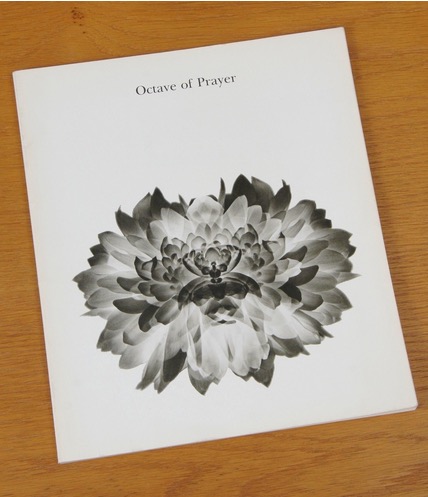
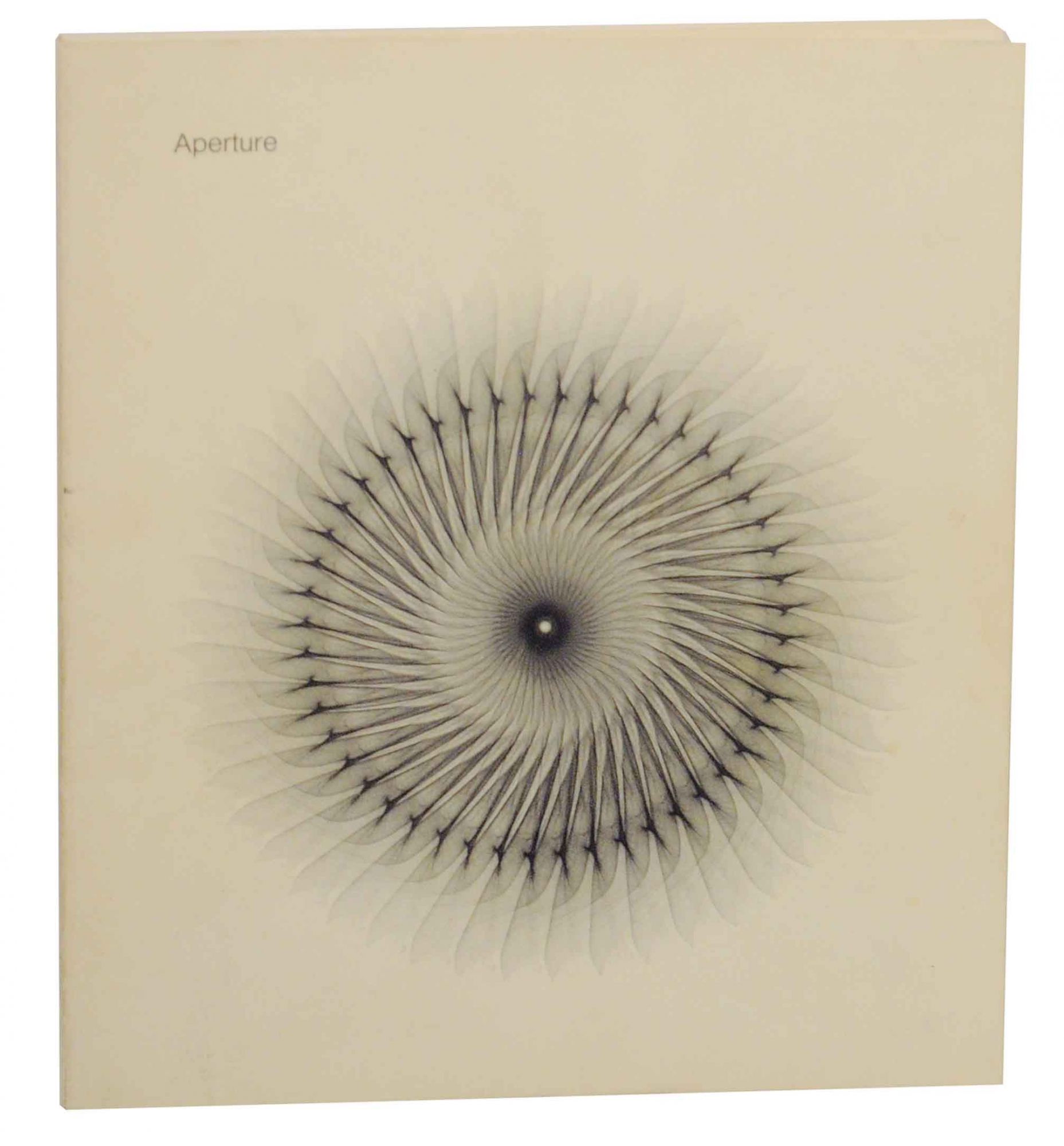
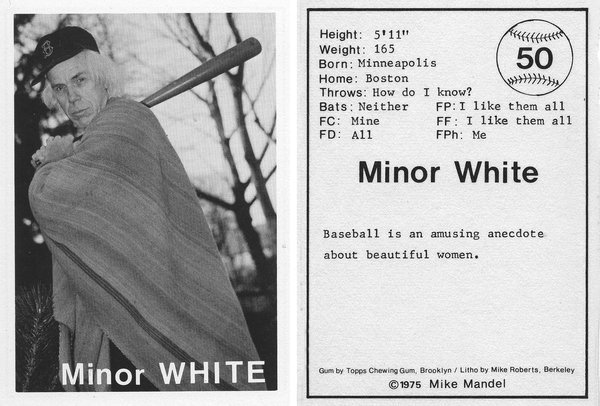
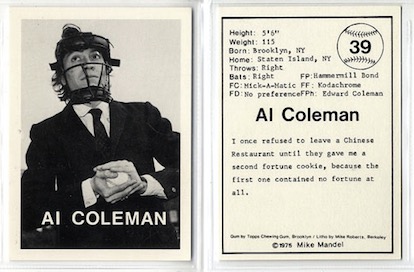




It’s a miracle that we are still here…..Cheers, Enos
“Outlast the bastards” is one of my mottoes (along with “Illegitemati non carborundum” — don’t let the bastards grind you down).
Cheers to you too. Hope it’s warmer where you are.
Allan
Hi Allen,
Just letting you know how much I enjoy all of your critical thoughts on photography , but I feel you deserve special praise for your latest effort on Minor White’s, ‘Octave of Prayer’. It is so rare to read such a forceful critique of a photographic worthy that the resultant breath of fresh air turns into gale of veracity blowing onto the clay feet of a titan. Thank god for a critic who calls out the saccharine, cloying examples of the creeping-Jesus sensibility. Your wonderful series on Robert Capa’s, D Day saga was a great critical reevaluation of another over hyped reputation. Many Thanks.
Glad you enjoyed this. Two more parts of this critique of Minor White coming shortly.
And while it’s my latest post at this blog, I feel obliged to point out (as I indicate in the prefatory note) that I wrote and published this in March 1973, 45 years ago. I included it in my 1979 book Light Readings.
Let me add that White made serious contributions to the medium — as a thinker, teacher, writer, editor, and photographer — that I valued then and continue to value today. These curatorial projects don’t number among them.
Hello A.D.
I remember the controversy of 45 years ago and recall the loss I felt then of losing access to your regular Village Voice “Latent Image” columns.
I enjoy your work on Photocritic International.
Harry
I highly recommend that those of you who are enjoying AD’s critique of Minor take a look at Andy Grundberg’s piece in the Sept 2, 1984 NY Times. Here is the link
https://www.nytimes.com/1984/09/02/arts/photography-view-the-fall-from-crace-of-a-spiritual-guru.html
I also recall Ansel Adams’s crack that Minor was practicing something Ansel called “Zone Buddhism.” Many of us owned Minor’s little book The Zone System Manual, which wasn’t bad.
As an antidote to Minor’s late period as a spiritual guru–so well captured by AD and Grundberg — one might take a look at the chapter “Student Portfolio” in the book The Moment of Seeing: Minor White at the California School of Fine Arts. The work is sufficiently catholic in its concerns to show that Minor was, in this early period, 1946-1955, willing to encourage his students to take chances. There is no hint that he is (in Allan’s useful phrase ) trying to create “minor Minors.”
A. David Wunsch
As I wrote in my response to the comment above from Lee Phillips, Minor made important contributions, not least with his own images and approach to sequencing thereof. While I obviously agree with aspects of Grundberg’s later critique, I think he ended up throwing out the baby with the bathwater.
Thanks for reprinting your review. I pulled “Octive of Prayer” off my bookshelf and realized you are right about it. At the time I didn’t know what to think. I considered Minor some kind of photography mystic. Back then a lot of photography came from Rochester, Massachusetts and a bit of California thrown in. New York was John Szarkowski land. Being from Indiana it was all a bit far off. Or far out. Octive seemed like more eccentric Minor. Now I see it hasn’t aged well. And don’t get me started on the photographers listed with page numbers. Remember? Right. Almost all pages lack page numbers. Mystical.
As I no longer have a copy of “Octave” myself, nor the full exchange at the time (the reply to your review nor even the response of my own from the Boston Globe – possibly retrievable from a Boston library with a subscription – other than the NYT piece cited above), others as well as myself may find a larger context for the premise of “Octave” explored in a Master’s thesis by Paul Dutton at UTS (University of Technology, Sydney)from 2009 that is posted at http://aransomephoto.com/wp-content/uploads/2016/10/Minor-White-Approaching-Invisibility.pdf , chapter 4 in particular.
By “reply to your review” I meant Minor’s response that was in “Camera 35,” following their publication of your VV article. Perhaps someone has a copy of it or link to it.
One reader did in fact send me jpegs of the Camera 35 feature, which I have converted to a pdf file. You can download it here: https://www.nearbycafe.com/artandphoto/photocritic/wp-content/uploads/2018/03/ADColeman_Minor_White_Debate_Camera35-November_1973.pdf